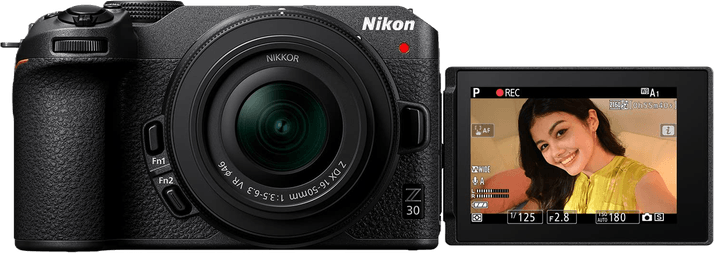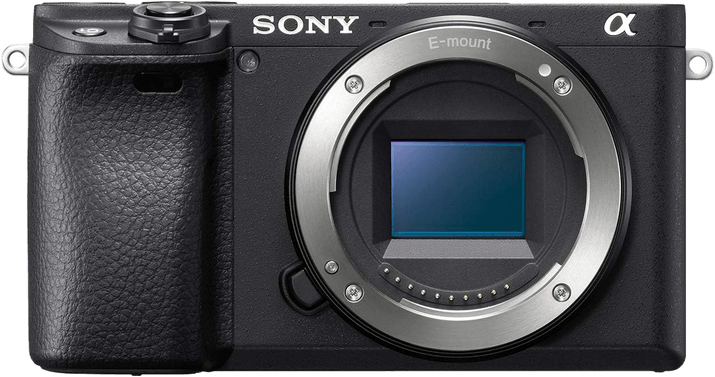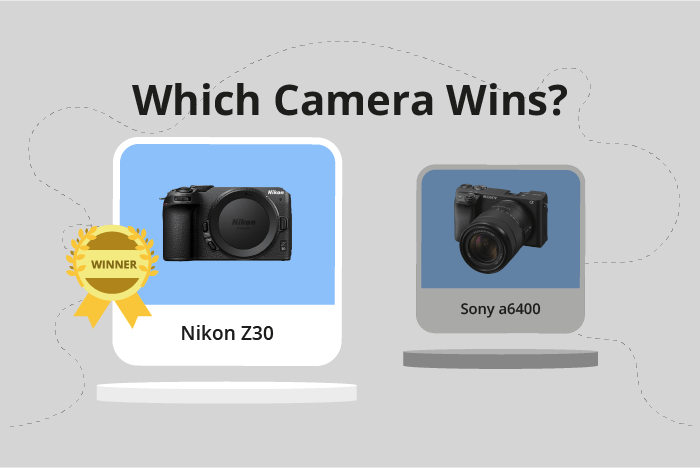Nikon Z30 vs Sony a6400 Comparison
Nikon Z30

Sony a6400

The Nikon Z30 emerges as the winner with a score of 72/100, slightly ahead of the Sony a6400 at 70/100. Both cameras are mirrorless and share similar dimensions and weight, with the Z30 measuring 128 x 74 x 60mm and weighing 405g, while the a6400 is 120 x 67 x 60mm and weighs 403g.
The Nikon Z30 outperforms the Sony a6400 in terms of its release year (2022) and launch price ($710). This makes the Z30 a more up-to-date and cost-effective option for photographers. On the other hand, the Sony a6400, released in 2019, may have some advantages in certain aspects; however, it comes with a higher launch price of $900.
Considering the scores, specifications, and price, the Nikon Z30 offers better value for money and modern features, while the Sony a6400 may still be a viable option for those who prefer its specific qualities. It is essential to weigh the pros and cons of each camera to determine which best suits your needs.
Nikon Z30 vs Sony a6400 Overview and Optics
The Nikon Z30 outperforms the Sony a6400 in optics with a score of 72/100 compared to the Sony’s 68/100. Both cameras share several specifications, including an 11fps shooting speed, a CMOS sensor, an APS-C sensor size, and a lack of image stabilization. Despite these similarities, the Nikon Z30 edges ahead in certain aspects.
The Nikon Z30’s higher DXOMARK sensor score of 97, compared to the Sony a6400’s 83, indicates that the Z30 has superior image quality. This camera also has a more advanced processor, the Expeed 6, which contributes to its better performance in terms of optics. Additionally, the Nikon Z30 uses the Nikon Z lens mount, which offers a growing selection of high-quality lenses.
On the other hand, the Sony a6400 has a higher megapixel count at 24.2, compared to the Nikon Z30’s 20 megapixels. This advantage allows for larger prints and more detailed images. The Sony a6400 also uses the Sony E lens mount, which provides a vast array of lenses compatible with the camera.
Despite the Sony a6400’s higher megapixel count and larger lens selection, the Nikon Z30’s superior sensor and processor give it the edge in overall optical performance. The Nikon Z30 is the better choice for those prioritizing image quality and processing capabilities. However, the Sony a6400 may appeal to photographers who require higher resolution images and a broader lens selection. Both cameras have their merits, but the Nikon Z30 takes the lead in optics performance.
Nikon Z30 vs Sony a6400 Video Performance
The Nikon Z30 and the Sony a6400 both have a video score of 91/100, making them equally impressive in terms of video capabilities. They share several common specs, such as 4K max video resolution, max video dimensions of 3840 x 2160, a max video frame rate of 120fps, and built-in time-lapse functionality.
The Nikon Z30 stands out with its slightly higher max video dimensions of 3841 x 2160, providing a marginally better video quality. This minor difference may not be noticeable to the average user but could be important for professionals who need the highest possible resolution.
On the other hand, the Sony a6400 does not have any significant advantages over the Nikon Z30 in terms of video capabilities. Both cameras perform equally well, making it difficult to declare a clear winner in this category.
Considering their equal video scores and similar specs, it is safe to say that both the Nikon Z30 and the Sony a6400 excel in their video capabilities. The minor difference in max video dimensions may not be a deciding factor for most users, but it gives the Nikon Z30 a slight edge. Ultimately, the choice between these two cameras will likely come down to factors outside of their video performance, such as price, design, and additional features.
Nikon Z30 vs Sony a6400 Features and Benefits
The Nikon Z30 wins over the Sony a6400 with a feature score of 83/100 compared to the latter’s 81/100. Both cameras share several key features, making them comparable in many aspects. These common specifications include a 3-inch screen size, touchscreen functionality, flip screen, absence of GPS, and the presence of WIFI and Bluetooth connectivity.
The Nikon Z30 outshines the Sony a6400 in screen resolution, boasting 1,040,000 dots compared to the a6400’s 921,600 dots. This higher resolution provides a clearer and more detailed display, granting better image and video preview quality. The Z30’s superior screen resolution contributes to its higher feature score.
On the other hand, the Sony a6400 still has advantages despite its lower feature score. For example, it may excel in areas such as autofocus, sensor quality, or image processing. However, without specific details on these aspects, it is difficult to determine where the a6400 surpasses the Z30.
In comparing the Nikon Z30 and Sony a6400, both cameras possess similar features, making them strong competitors. The Z30 takes the lead with a higher feature score, mainly due to its better screen resolution. The a6400 may have its own advantages, but without further information, it remains unclear where it surpasses the Z30. Therefore, the Nikon Z30 emerges as the winner in this comparison based on the available specifications.
Nikon Z30 vs Sony a6400 Storage and Battery
The Sony a6400 triumphs over the Nikon Z30 in storage and battery with a score of 37/100 compared to the Z30’s 35/100. Both cameras have a single memory card slot and support USB charging. They accept SD, SDHC, and SDXC cards, with the a6400 also compatible with Memory Stick Duo.
The a6400 outperforms the Z30 in battery life, offering 410 shots compared to the Z30’s 330 shots. This longer battery life makes the a6400 more suitable for extended shooting sessions. The Nikon Z30, however, does not have any advantages in storage and battery over the Sony a6400.
Considering these points, the Sony a6400 is the superior choice for photographers who prioritize longer battery life and additional memory card compatibility. The Nikon Z30 falls short in this aspect, making the a6400 the clear winner in storage and battery performance.
Alternatives to the Nikon Z30 and Sony a6400
Are you still undecided about which camera is right for you? Have a look at these popular comparisons that feature the Nikon Z30 or the Sony a6400:

